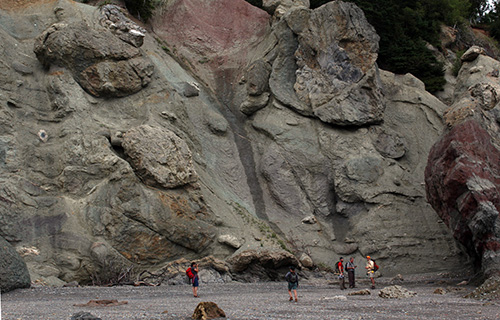
Geoheritage in Nova Scotia
 Geoheritage is the history of the Earth and life upon it, told and experienced at geological sites around the world.
Geoheritage is the history of the Earth and life upon it, told and experienced at geological sites around the world.
The concept of Geoheritage is growing rapidly globally. In Canada, the Nova Scotia Department of Natural Resources is seen as a leader in establishing a list of geoheritage sites.
In Nova Scotia we recognize two categories of Geoheritage:
- natural geological sites that serve as exceptional examples of Earth’s evolution in rocks and of the history of life in fossils, that range from exceptional examples like Peggy’s Cove to globally unique sites like the Joggins Fossil Cliffs World Heritage Site
- cultural geoheritage sites, where Nova Scotians have interacted with the geology around us, including miners museums and memorials, and sacred sites of the Mi’kmaw.
Our geoheritage list serves as a guide, vetted by regional experts, to sites across Nova Scotia which can be celebrated and experienced by Nova Scotians and by visitors from around the world. It also includes sites that are scientifically important and sometimes sensitive to visitation.
For info, contact John Calder at 471 2854 or John.H.Calder@novascotia.ca